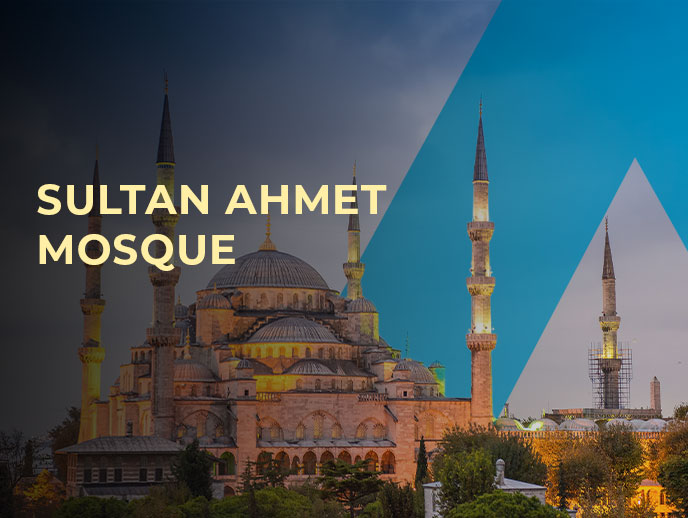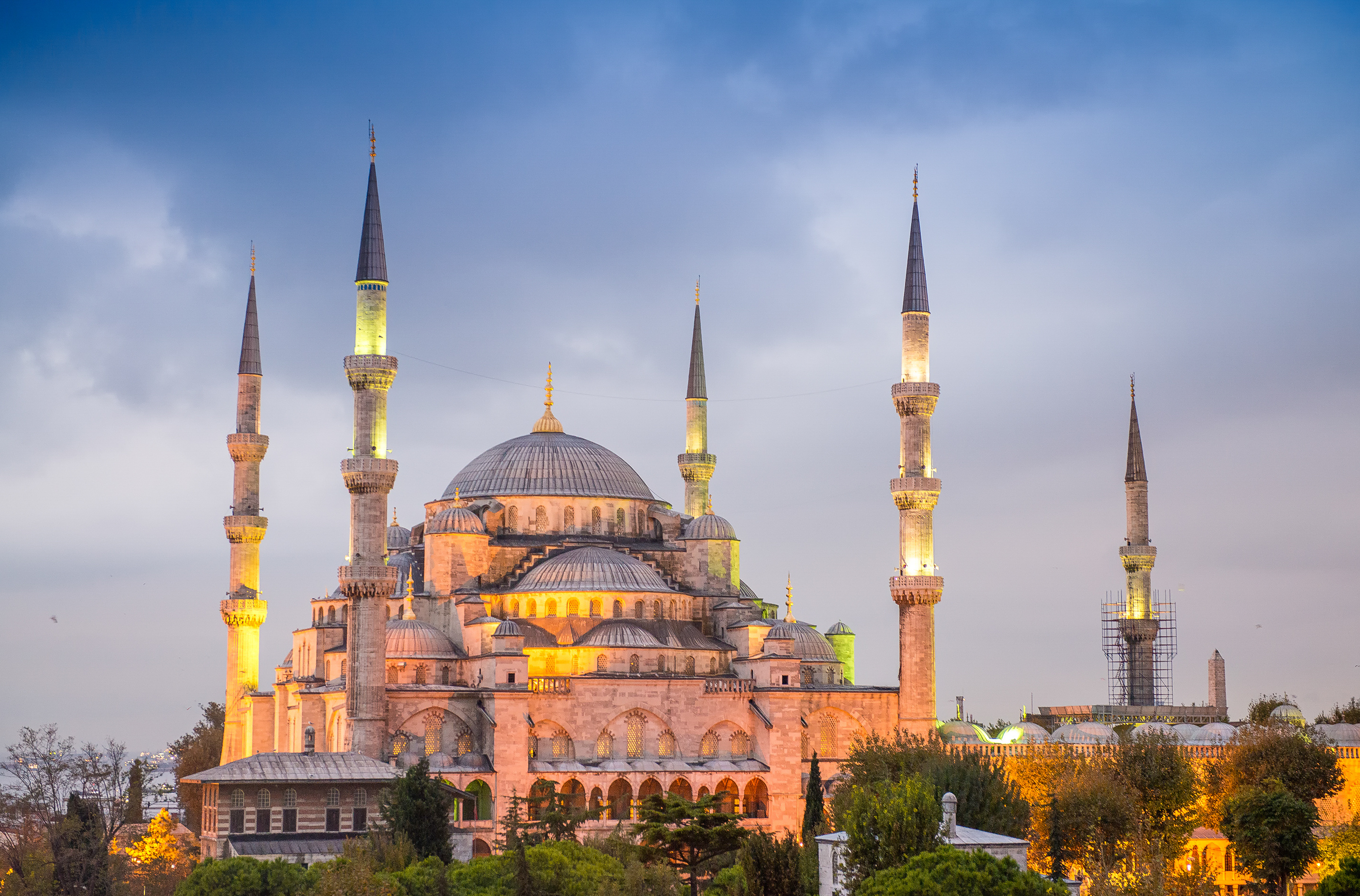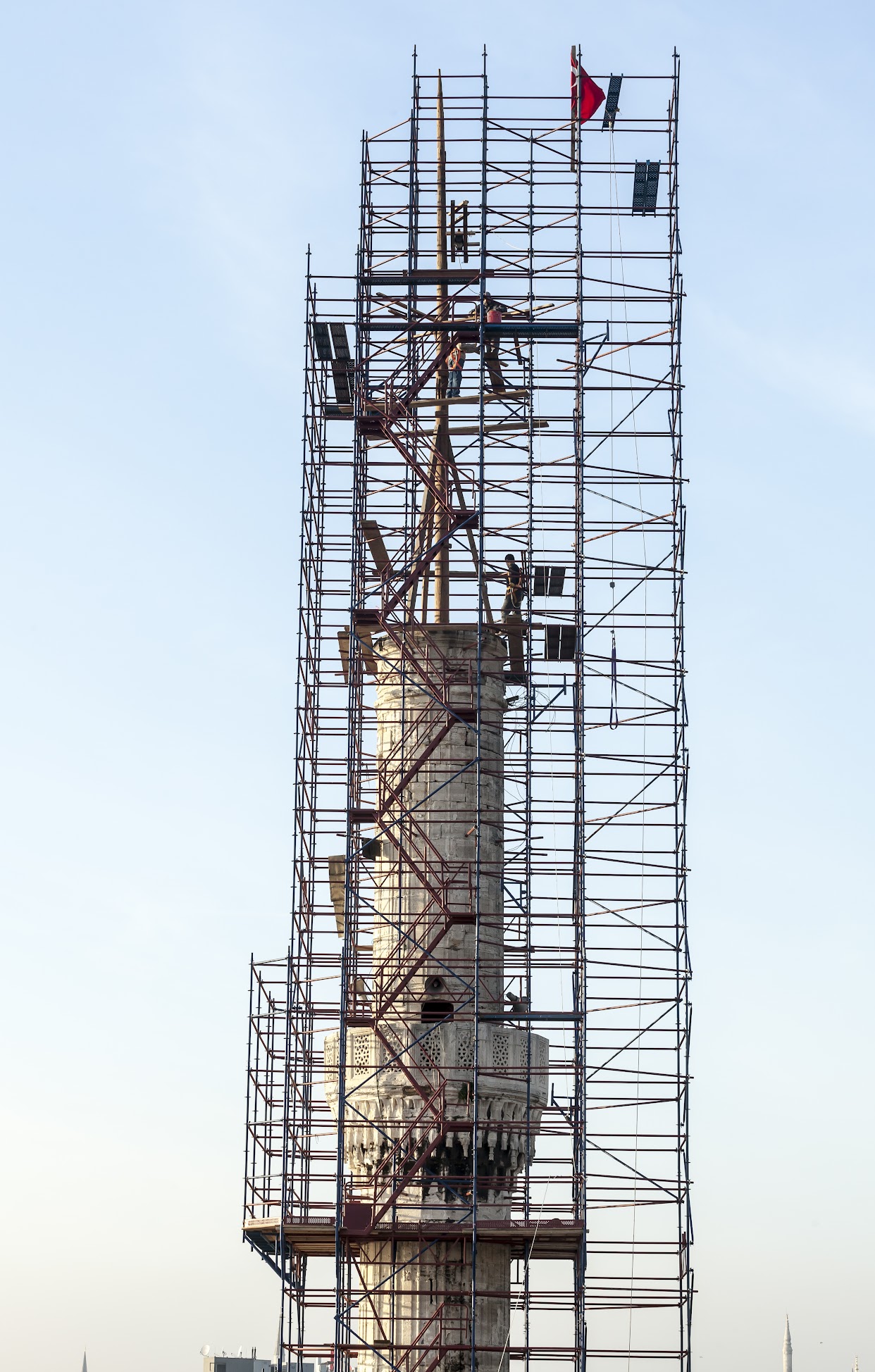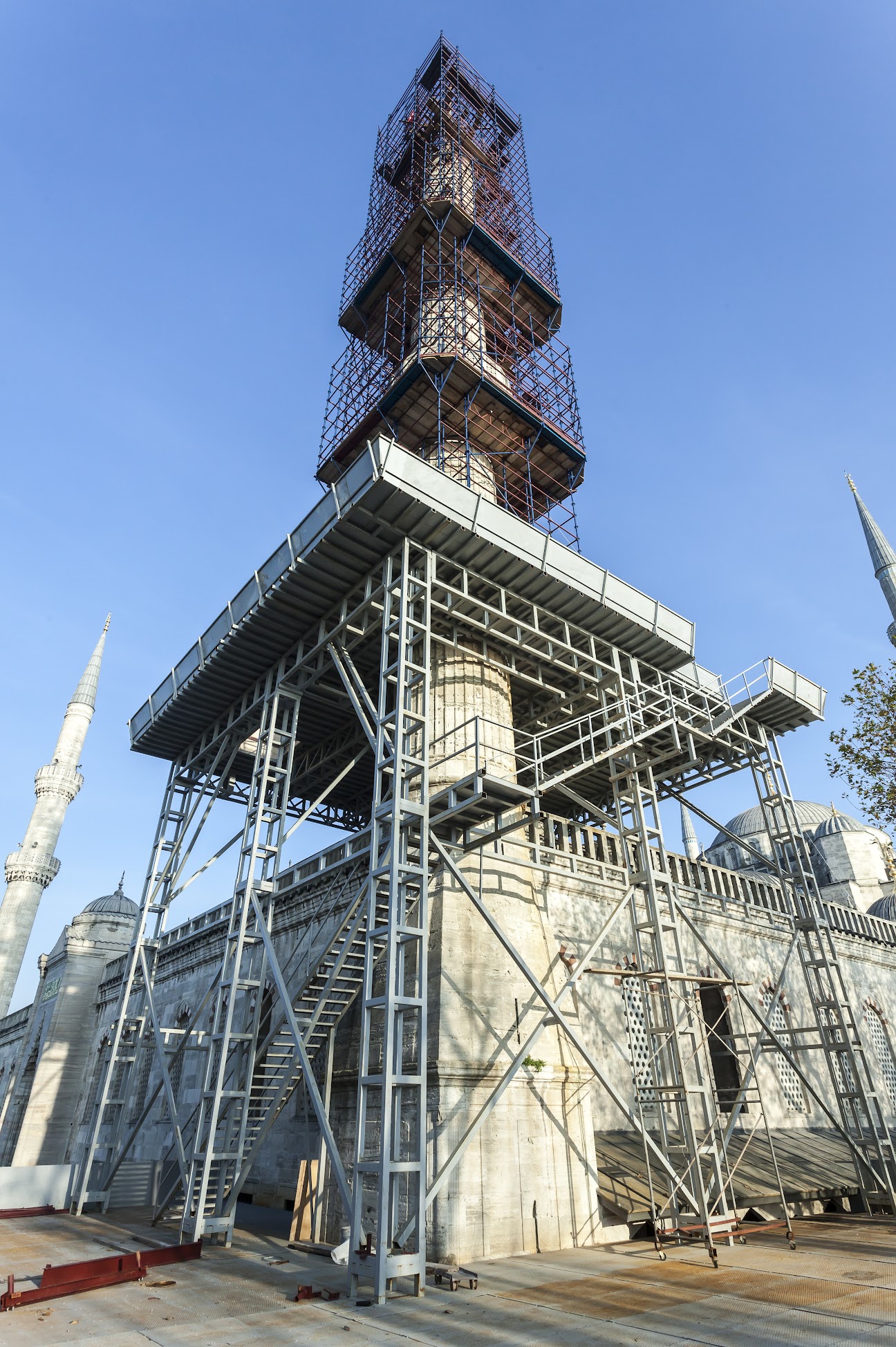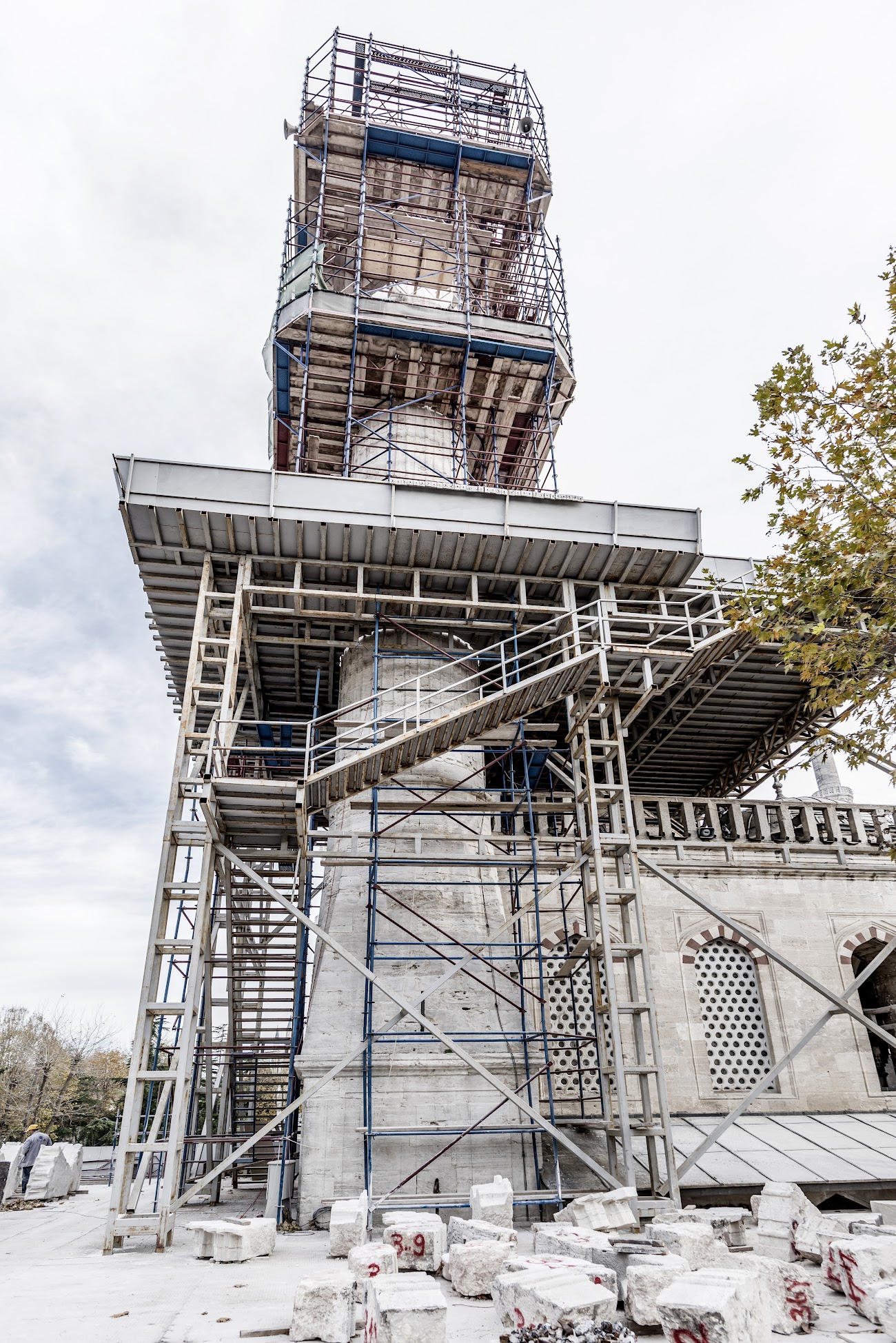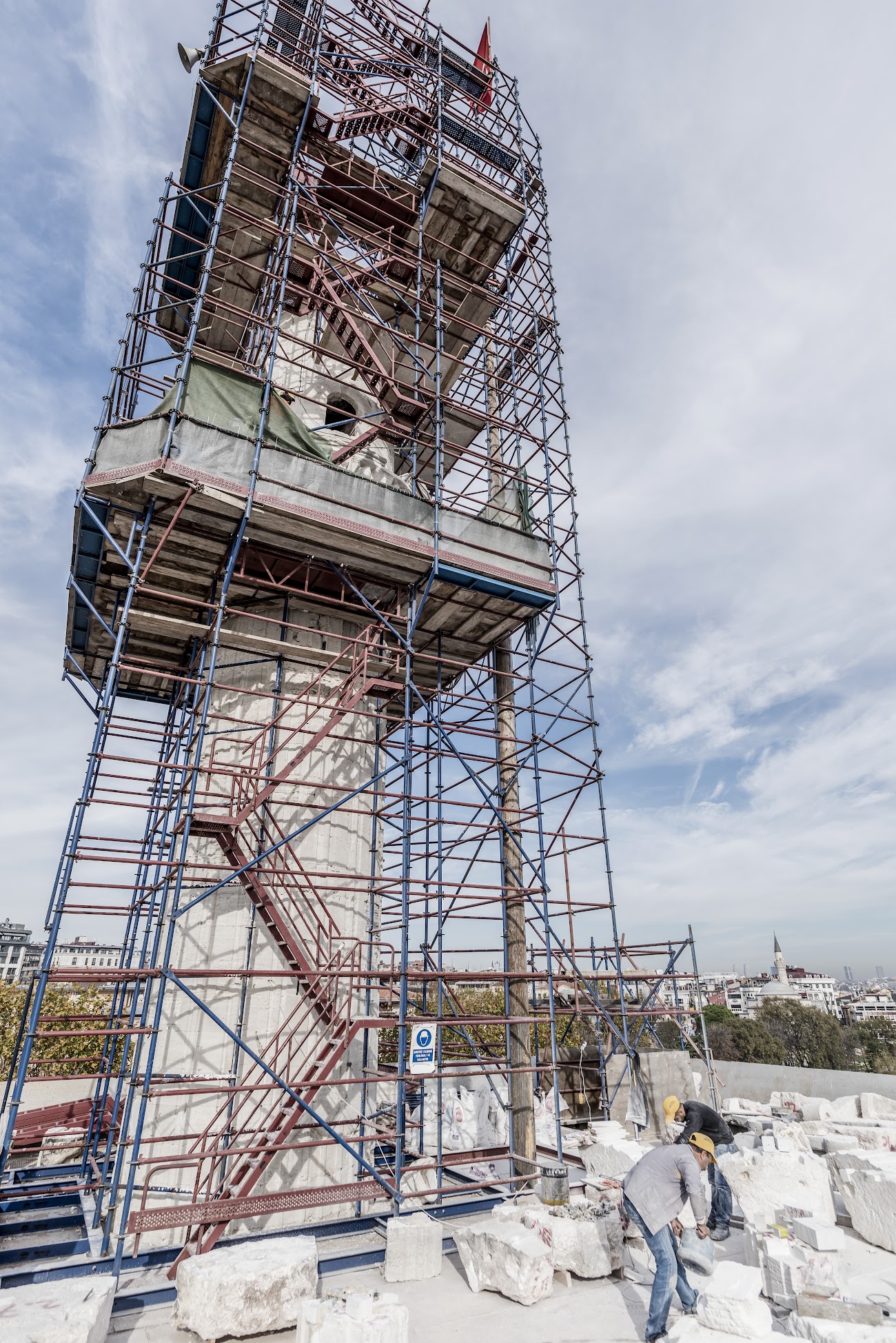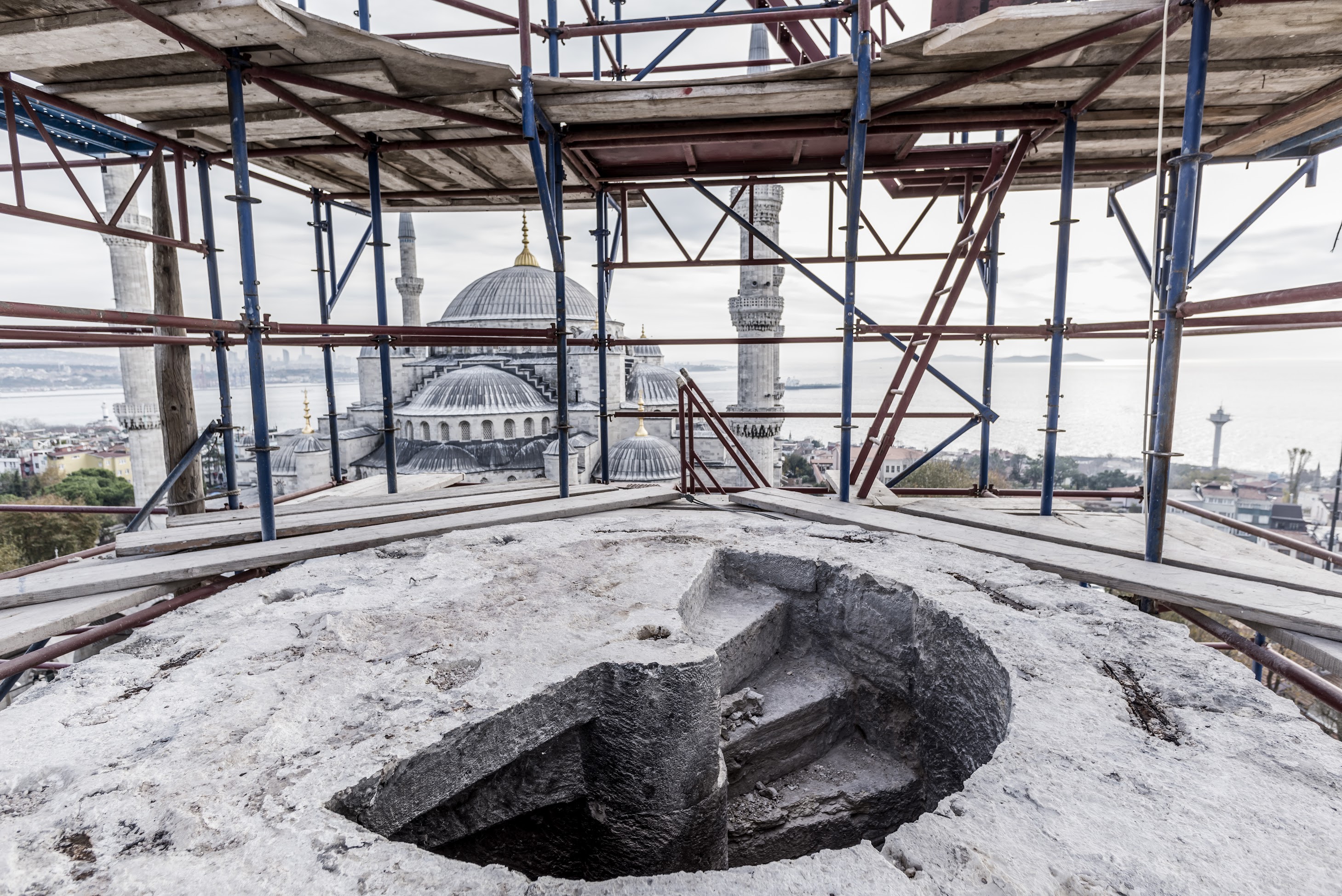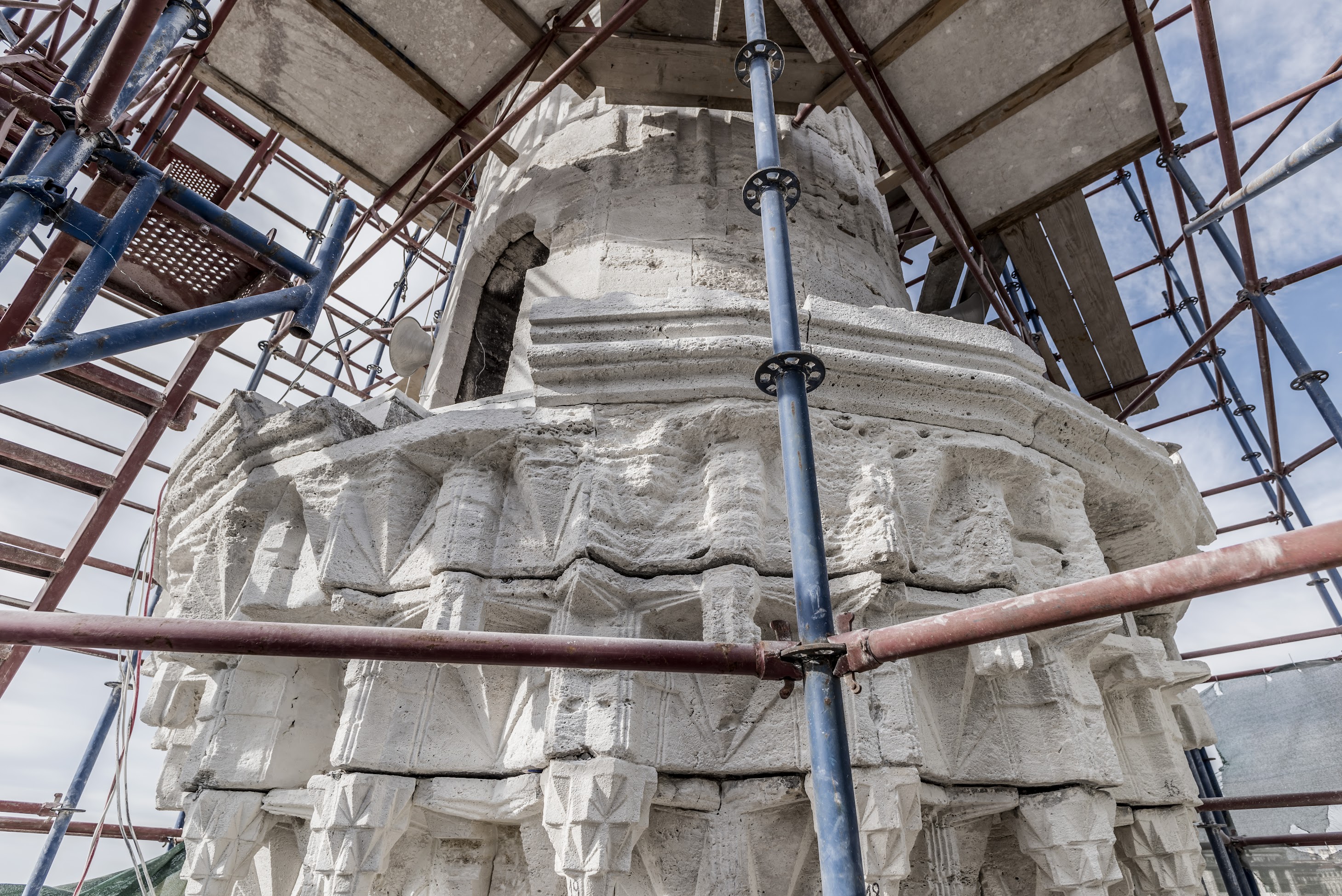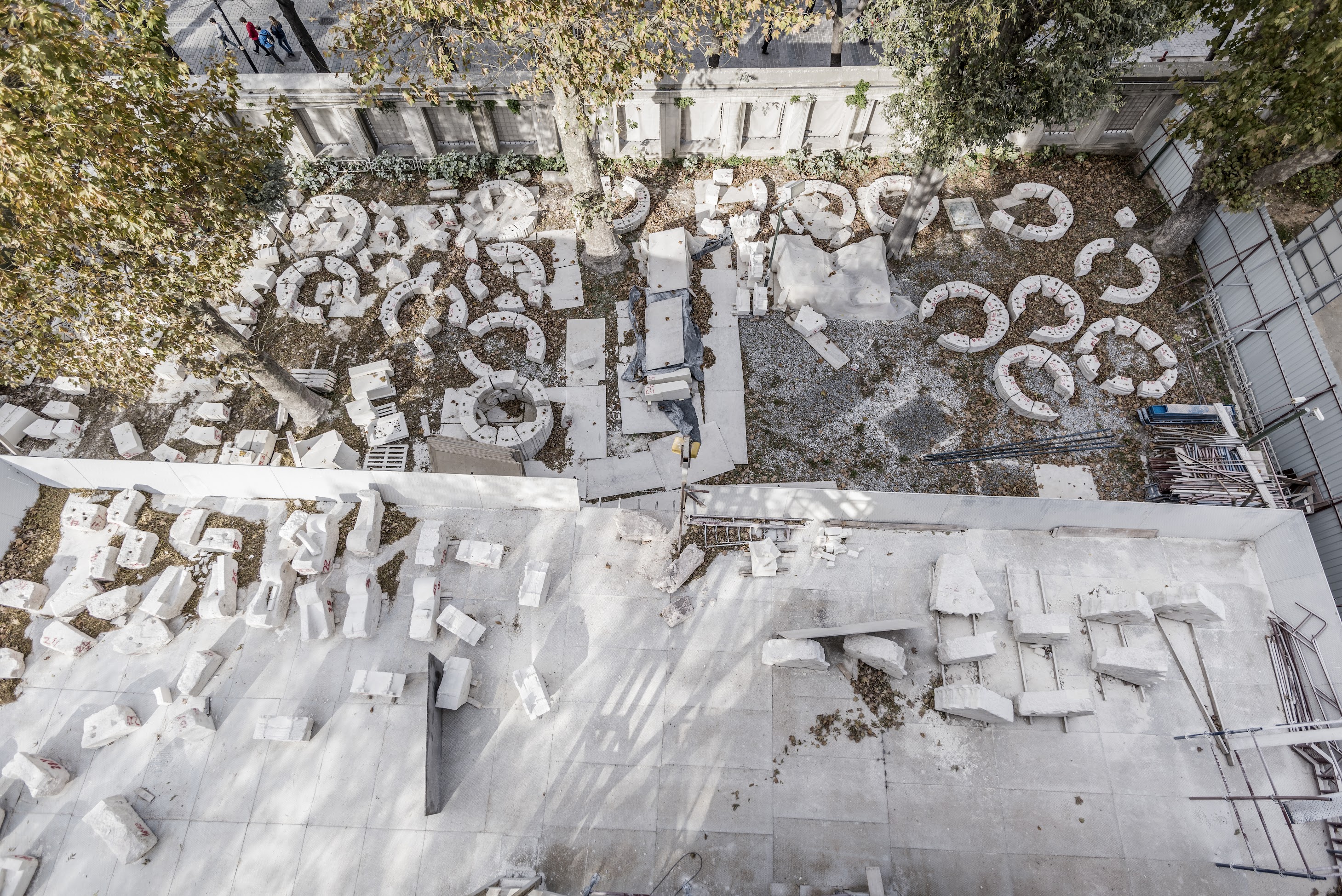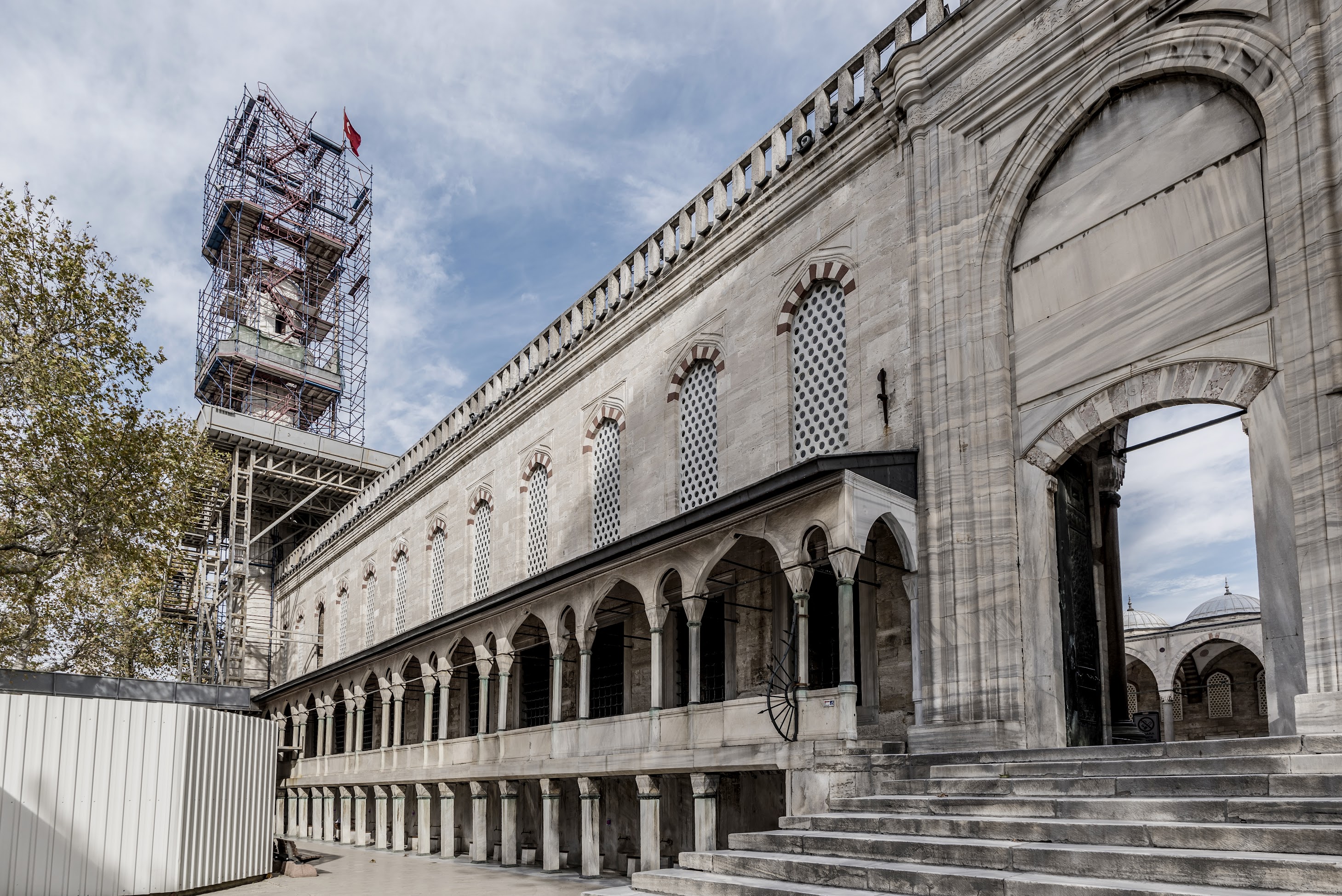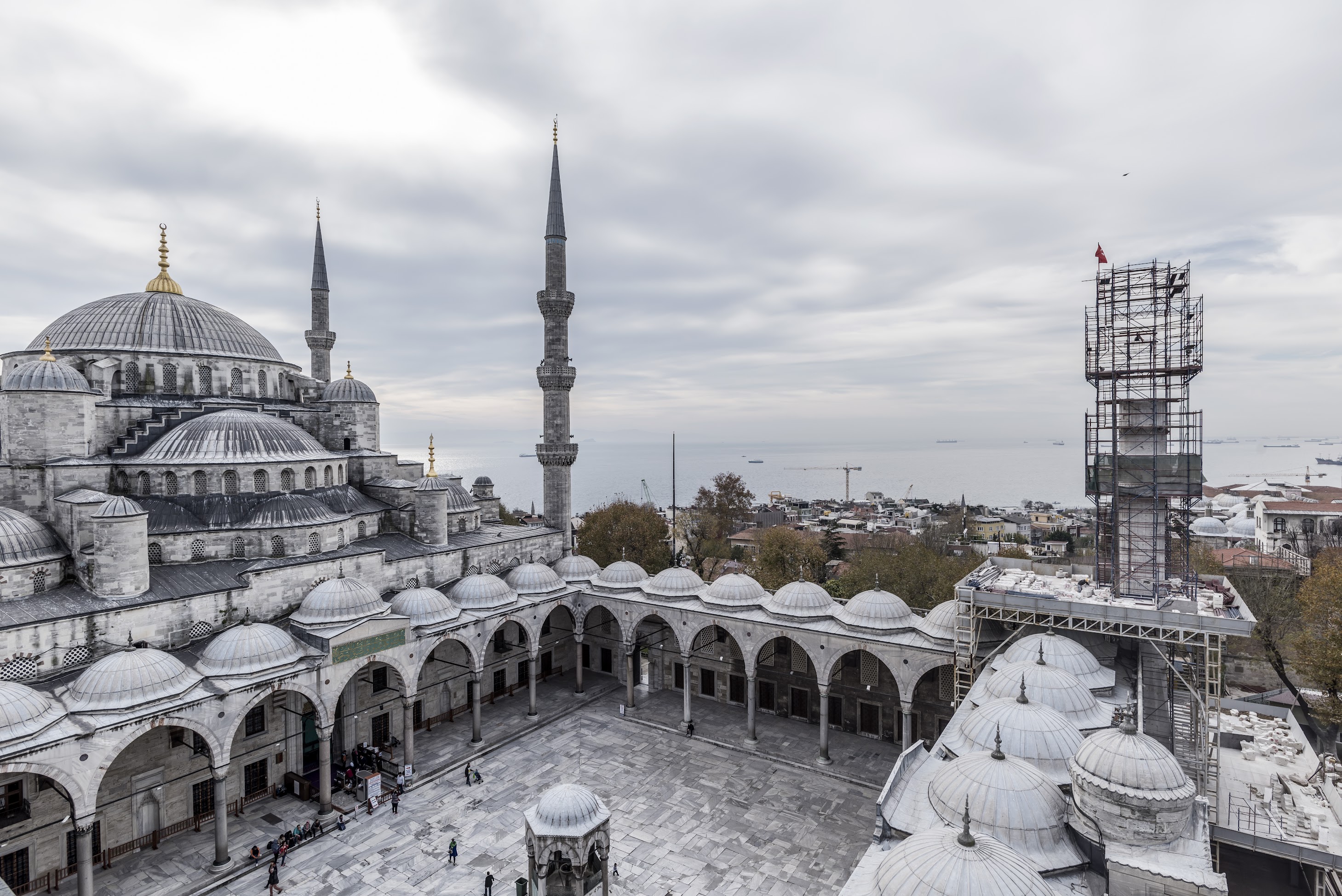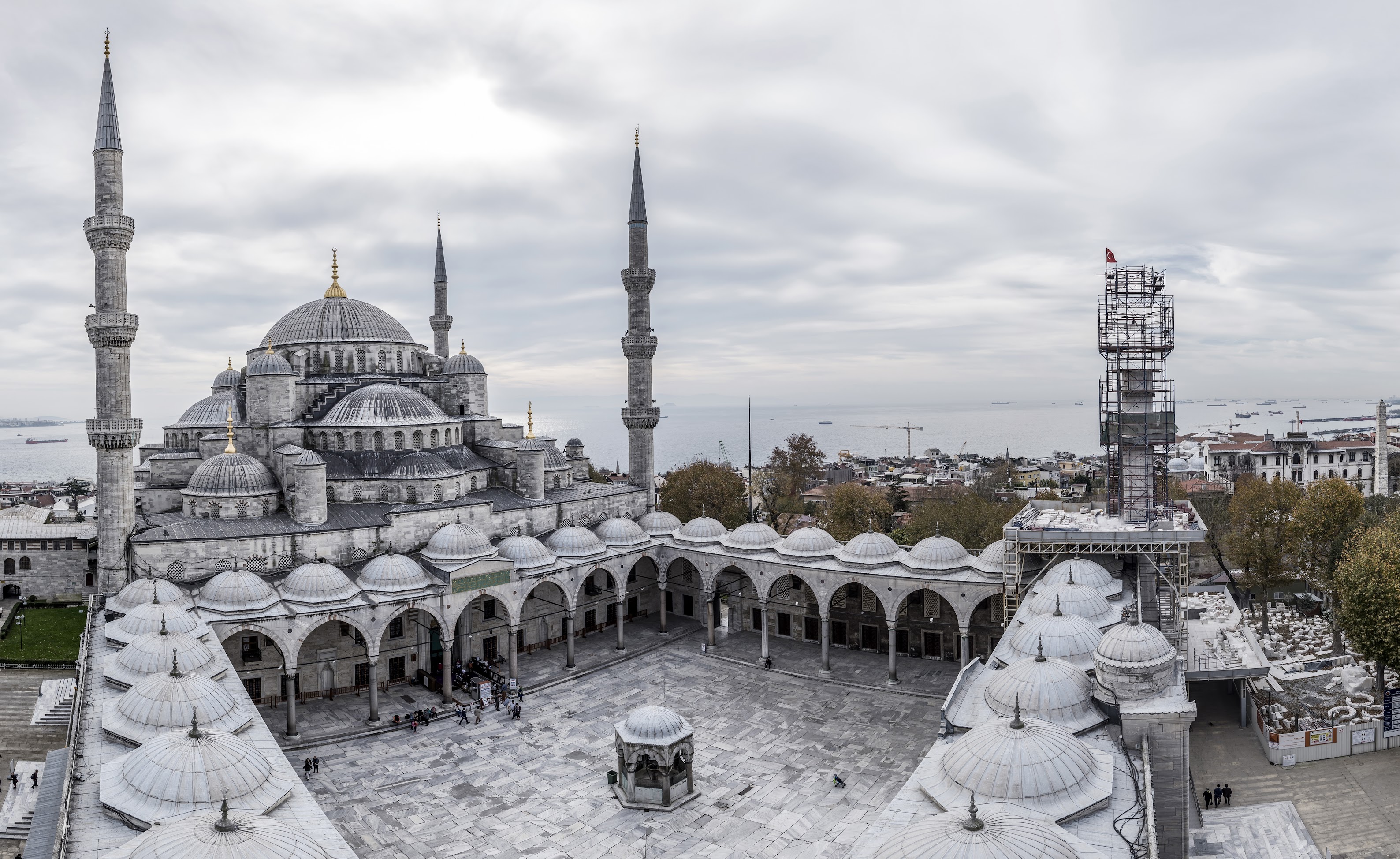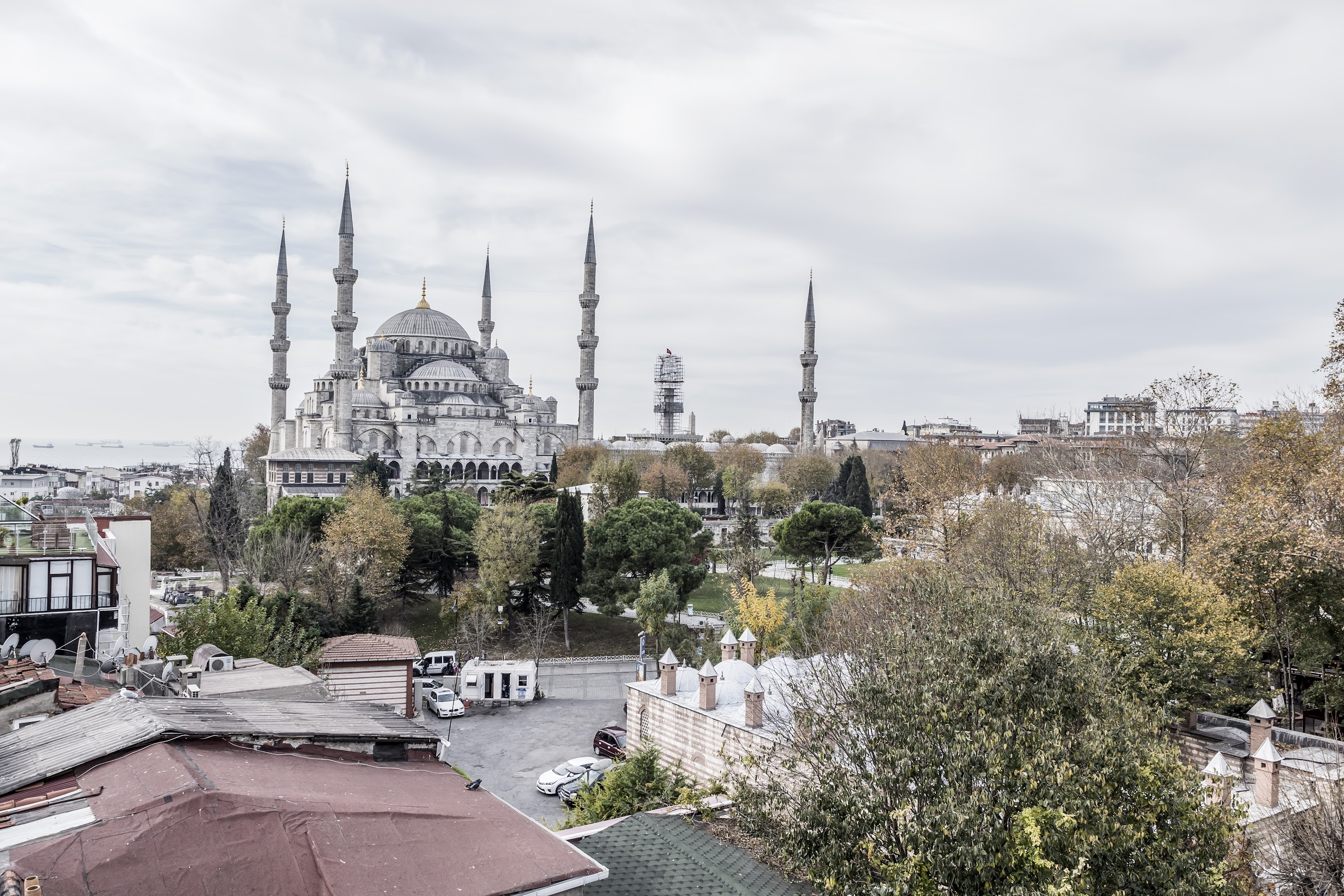SULTAN AHMET MOSQUE
The Sultan Ahmed Mosque and its külliye (complex) were commissioned by Ottoman Sultan Ahmed I and constructed between 1609 and 1617 by the imperial architect Sedefkâr Mehmed Ağa. Located in Istanbul’s historic peninsula, the complex once included the mosque itself, the imperial pavilion, elementary school (sıbyan mektebi), madrasa, bazaar (arasta), bathhouse (hamam), hospital (dârüşşifâ, with its own masjid and bath), public kitchen complex (imâret-i âmire), guesthouses (tabhâne), caravanserai (han), Quranic school (dârülkurrâ), mausoleum, public fountains (sebils), fountains (çeşme), shops, rooms, cellars, coffeehouse, and residential buildings. Of these, the cellars, coffeehouse, houses, the hospital (except the bath), guesthouses, the caravanserai, some shops, and three fountains have not survived to the present day.
Due to its interior decoration with blue, green, and white İznik tiles and the blue-hued hand-painted ornamentation inside the central dome and semi-domes, the mosque is referred to by Europeans as the “Blue Mosque.”
The Sultan Ahmed Mosque became Istanbul’s principal mosque after Hagia Sophia was converted into a museum in 1935. It is also the first mosque in Turkey with six minarets.
The mosque maintains the classical Ottoman courtyard-with-arcade plan. It features five main domes, six minarets, and eight secondary domes. This structure, which blends architectural elements of Hagia Sophia with traditional Islamic architecture, is considered the last great mosque of the classical Ottoman era.
The prayer hall measures 64 by 72 meters, and the central dome rises 43 meters high with a diameter of 23.5 meters.
To adorn the interior, over twenty thousand handmade İznik tiles each featuring sixty tulip motifs in more than fifty unique designs were used in the upper section, along with two hundred stained-glass windows. While the tiles in the lower levels follow traditional motifs, those in the gallery level depict flowers, fruits, and cypress trees.
As ALBA İnşaat, we completed the restoration of the structure between 2013 and 2014

